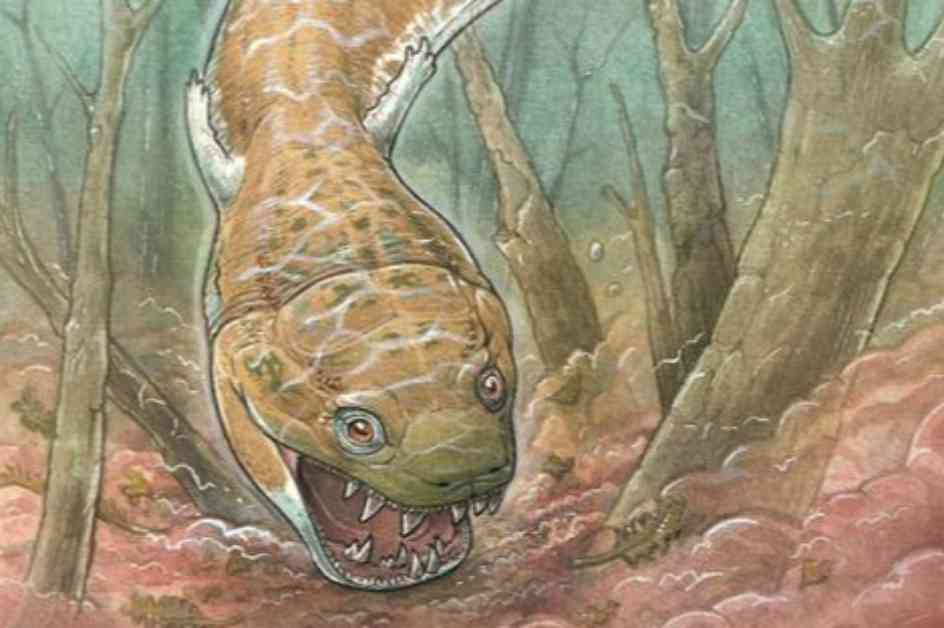Imagine a creature that ruled the waters over 40 million years before dinosaurs came along. A giant salamander, Gaiasia jennyae, with a massive skull, suction-cup mouth, and 4-inch fangs was recently discovered by researchers. This ancient amphibian, aptly named the “salamander from hell,” measured over 6 feet long and likely lurked in swamps and lakes, waiting to ambush its prey.
The unique physical characteristics of G. jennyae, such as its flat head for suction and large fangs for grabbing prey, made it a fearsome predator in its time. Unlike fast ambush predators like pike or gar, Gaiasia relied on hiding and surprising its prey due to its slower speed in the water. This evolutionary strategy helped it thrive as an apex predator before dinosaurs took over.
What makes this discovery even more significant is that G. jennyae belongs to a group called stem tetrapods, early four-legged vertebrates that eventually gave rise to mammals, reptiles, and amphibians. This finding challenges the belief that such animals had gone extinct millions of years before this giant salamander existed. The fossils of G. jennyae provide crucial insights into the evolutionary history of ancient amphibians and vertebrates.
Researchers are still puzzled as to why Gaiasia persisted while other stem tetrapods disappeared. Some speculate that its ability to tolerate colder temperatures may have contributed to its survival. The location of the fossil in Namibia, which was closer to the poles 300 million years ago, suggests that Gaiasia may have adapted to cold environments better than its counterparts. However, more fossils are needed to unravel the mysteries surrounding the evolution and persistence of G. jennyae.
This discovery opens up new avenues for understanding the evolution of ancient amphibians and the role they played in shaping the ecosystems of the past. By studying creatures like Gaiasia, researchers can gain valuable insights into the diversity and adaptations of early vertebrates that paved the way for life as we know it today. The discovery of G. jennyae not only sheds light on the past but also challenges our preconceived notions about the evolutionary history of amphibians and other tetrapods.




